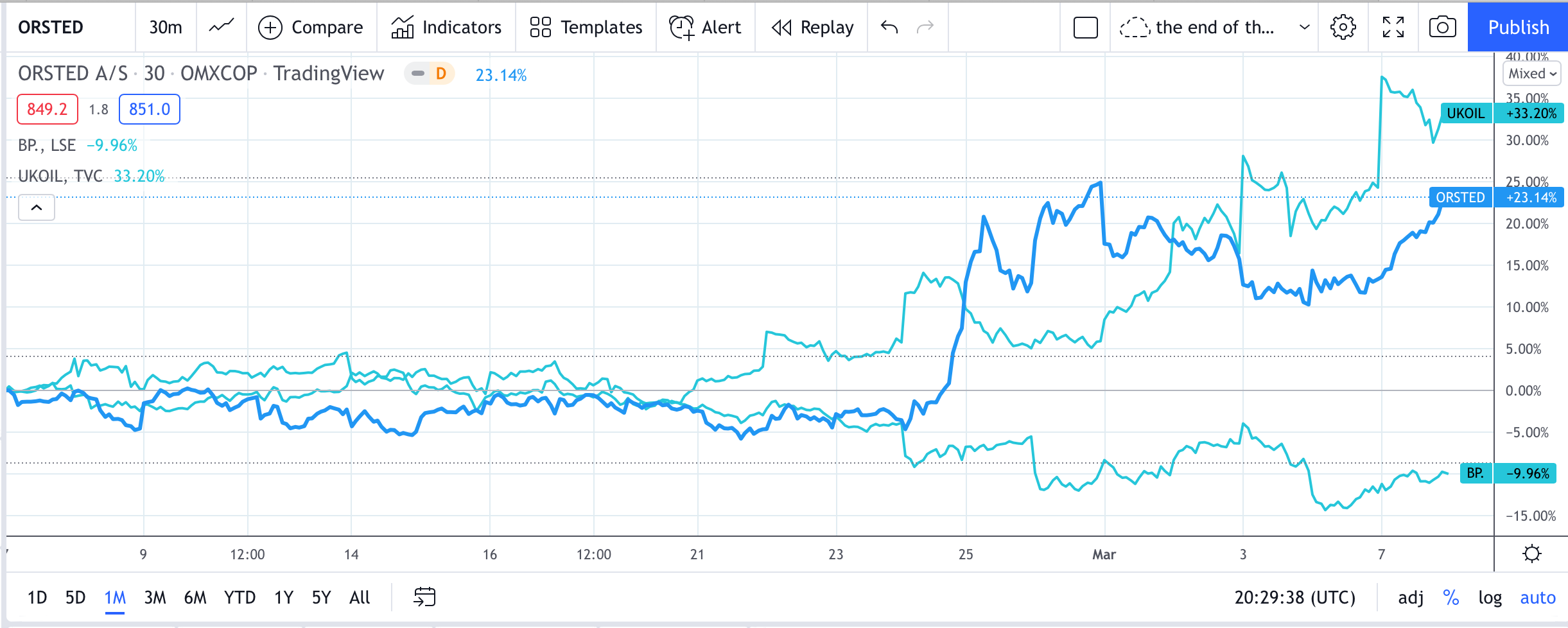Renewables: the antidote to the commodity price surge
‘Self-reliance’ is a phrase that we expect to hear a lot of in the coming days and weeks, especially in relation to national energy supplies. The UK Prime Minister Boris Johnson said on Monday that the UK would look to boost oil and gas production in the North Sea as a direct result of energy concerns linked to the Russian invasion of Ukraine. The sharp surge in commodity prices since the outbreak of conflict in Ukraine, and particularly the surge in the price of oil, Brent crude closed Monday’s session above $123 per barrel, after earlier climbing as high as $139 per barrel after the US threatened to halt Russian energy supplies, could trigger a tidal change in global energy logistics and supply. The crisis in Ukraine could drive the de-globalisation of the global energy system, and reverse decades of international energy contracts.
How renewables could benefit from the crisis in commodity markets
The chief way to do this is to turn to renewable sources of energy: for example, you can only get a domestic supply of wind or solar power. The EU Commission is due to present its updated energy strategy, and the events of the last two weeks may dramatically alter the contents. In the short term, Europe will need to find alternative sources of hydrocarbons, for example, from Qatar or the US, it may also have to become more reliant on coal in the coming months. However, in the long term, the EU is likely to double-down on its focus to switching to greener sources of energy. The energy crisis we are currently witnessing, highlights the need for more creative thinking when it comes to renewable energy sources. The EU’s new energy strategy is likely to include a plan to boost the interconnectivity of electricity grids across Europe so that excess wind in Germany could keep the lights on in Austria or Italy, for example.
The chart below shows Brent crude oil, as a proxy for the overall commodity market, it also shows Orstead, which is the world’s largest offshore wind developer as of 2020. The company is also constructing two of the largest offshore wind farms in the world. We are using this stock as a proxy for the renewables sector. We also show the BP share price.
Chart:
This chart shows us three things:
1, The price of oil and renewable energy providers have moved in lockstep.In the past month, the price of Brent crude has surged by one third, however, Orstead’s share price has also risen by a decent 23%. In contract, BP’s share price has underperformed as it was forced to ditch its Russian interests. Thus, the price of stocks in the renewable space have actually been rising in unison with the global oil price, albeit at a slightly slower pace, since the outbreak of this crisis. If the war with Russia and Ukraine drags on, this positive correlation could continue.
2, Stocks in the renewable space have been outperforming the stock market.On Monday, the Nasdaq 100 fell 3.6% and entered a bear market, the Dow Jones is also close to correction territory. However, the iShares Global Clean Energy fund was up 2.4% at the start of this week. Green energy shares are proving themselves to be a good defensive stock to own in this period of geopolitical energy crisis. While new oil and gas projects can take some time to come to fruition, for example new gas supplies can take three years to reach consumers, renewable sources of energy have a relatively quick deployment capability. This is why we like the following key renewable stocks for the long term, as the West reassess its energy security and develops new, domestic supplies of energy that we think will continue to focus on renewables.
Renewable stocks that we like include: Orstead, as mentioned above, wind turbine maker Vestas Wind System, Verbund - the Austrian electricity supplier that generates 90% of its energy from renewable sources, Solar Edge Technology and First Solar are also on our radar as solar power becomes an important source of energy in the West and Jinko Solar, the world’s largest solar panel maker.
3, The oil price and oil producers. BP has been under-performing relative to the price of crude, which highlights the disconnect between the oil producers’ share prices in recent weeks and the strength of the oil price. The link between the two has been broken, and while a surging oil price is likely to boost their coffers in the short term, in the long term, the rising oil price is likely to accelerate the move towards green energy supplies. Unless oil producers like BP and Shell get busy developing green technology then they could fall behind some of the companies listed above.

